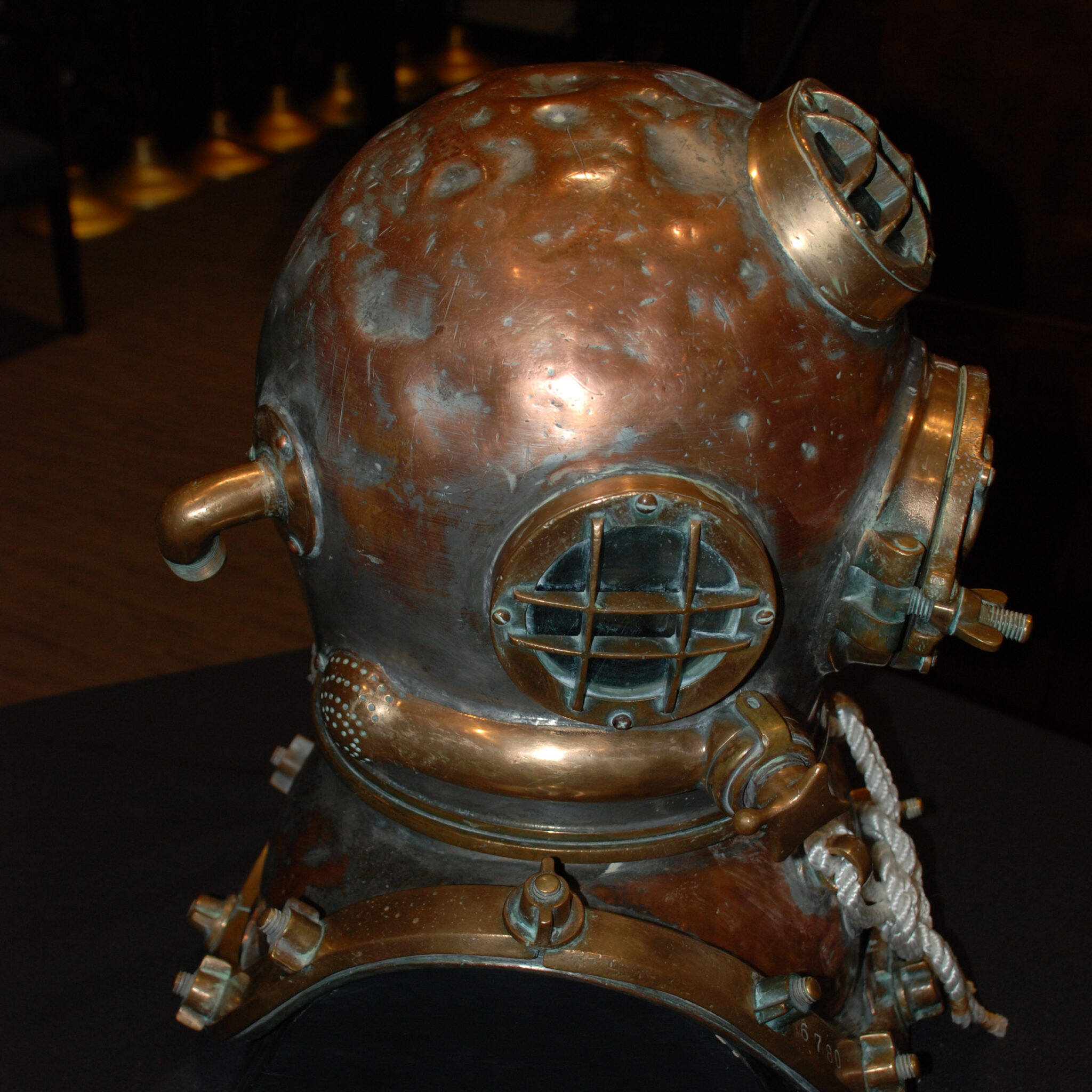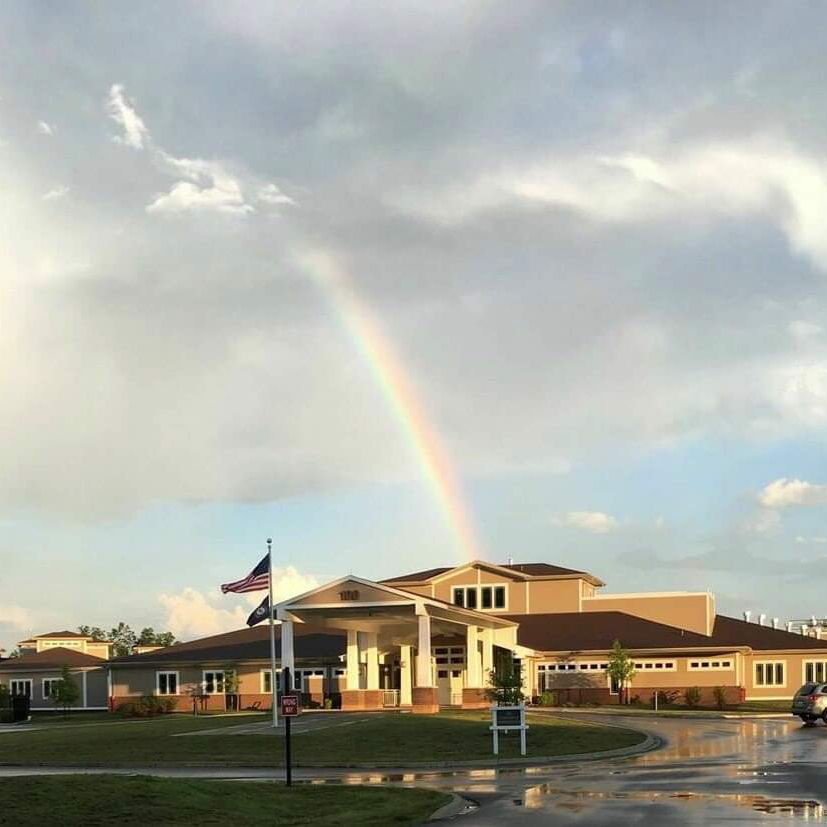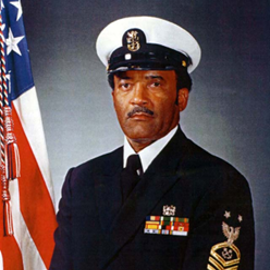Imagine your favorite superhero. Maybe yours carries a hammer that only he can wield (Thor) or wears a specially designed suit made of vibranium, which is only found in Wakanda (Black Panther). Or is the superhero you’re picturing carrying her signature Lasso of Truth (Wonder Woman)? A real-life Kentucky superhero whose name you should know is Carl Brashear, who was born in Tonieville, Kentucky, in LaRue County, in 1931.
His parents were sharecroppers, so much of his life was spent helping with the land and animals, which he did along with his seven siblings. During his elementary years, like a lot of rural children, he attended a one-room schoolhouse, but because he was black, Brashear’s school was further away, lacked transportation, and was in disrepair compared to the school attended by white children. Brashear didn’t love school, perhaps in part for these reasons, and by age 14 he determined that a life of adventure in the military was for him.
At age 17, Brashear entered the Navy, and headed to basic training in February 1948 at Naval Station Great Lakes in Illinois. Just as he had been segregated in school, he experienced a similar experience in the Navy, which historically alternated periods of outright barring black men from enlisting or only allowing them to become messmen, stewards and cooks. Fortunately Brashear made a positive impression on an officer, which helped him transfer to boatswain’s mate after serving one year as a steward, providing hospitality and cleanliness.
A boatswain’s mate might sound like a term straight out of “Moby-Dick” and may not mean much to landlubbers, but it entails, among other things, keeping lookout, repairing ship equipment, as well as operating communications equipment, small boats, tugs and barges. During his time as a boatswain’s mate, Carl saw a Navy diver at work and knew that this was the path for him. Unfortunately, the Navy wasn’t eager to have black divers despite Brashear’s requests.
By 1954, however, the Navy had a change of heart and he found himself on his way to Bayonne, New Jersey, to complete training as a salvage diver, which would give him the skills to complete search and rescue, recovery, and cleanup operations. Despite half of his diving class failing or dropping out, suggesting the difficulty of the class, Brashear completed the course and saw a brighter future for himself.
He spent many years as a salvage diver and continued to acquire new skills, including a scuba diving certification, but his ultimate goal was to become a master diver. He completed his GED and took a course to become a first-class diver, but, unfortunately, Brashear failed out of this course. For a man used to diving beneath the ocean’s waves, this felt like hitting the ocean’s floor. However, he wasn’t the type of man to just give up; he switched his plan and headed to Hawaii for second-class diving school, where he succeeded.
In 1961 Brashear returned to the fleet as a second-class diver and was able to participate in some fairly historic moments, including assessing what was left of the USS Arizona, the battleship that was sunk during the bombing of Pearl Harbor. He was then sent to the Indian Ocean, where he captained ships as part of Operation Dominic, which tested nuclear weapons.
By 1963, he decided to return to first-class diving school, and used everything he had learned over the previous several years to not only pass the class, but also help out a struggling colleague who was in danger of failing the class.

In every superhero story there is a point where something monumentally bad happens that threatens to completely destroy the protagonist. For Brashear, this was an accident aboard the USS Hoist in 1966. While on a mission to search for a missing hydrogen bomb off the coast of Spain, a steel pipe broke loose from the boat and tumbled down the deck of the ship. Brashear pushed a fellow sailor out of the way, leaving him in the path of the steel pipe, which left his lower left leg with severe compound fractures. No one knew if he would ever walk again, which meant his career as a diver was likely over.
Brashear had worked too hard for too long to not dive, so he asked the doctors to amputate because he wanted to get back in the water as soon as he could. As it turned out, an infection made amputation necessary. Brashear learned as much as he could about wearing prosthetics and quickly adapted to an artificial leg.
Despite such a profound change to his health, he insisted that he could and would dive once again. With the approval of the Navy, he began a one-year trial period during which he was tested and monitored to ensure he was physically able to dive safely By the end of that 12-month period, Brashear resumed his position as a diver.
By early 1970, Brashear qualified as a saturation diver (which allows a diver to live and work underwater before being able to resurface in a short decompression period) and was soon given what he had long dreamed of: the opportunity to take the master diver course. He was assessed, stressed and challenged by instructors for five weeks to ensure he had the know-how and temperament to deal with virtually any situation that might occur underwater. In June 1970, Carl Brashear became the first African American master diver in the history of the United States Navy, an honor he held and loved for the next nine years.
Because of Brashear’s achievements, it made sense that the state of Kentucky would honor him in some way. “It was through his determination, perseverance and bravery that Brashear overcame many obstacles to become one of Kentucky’s true heroes, and the reason the Center was dedicated in his name,” says Sue Popplewell, executive director at the Carl Brashear Veterans Center in Radcliff. “There was a dedication ceremony held at the Center on November 9, 2017.”

Built on a 19-acre campus, the Carl M. Brashear Radcliffe Veterans Center consists of four neighborhoods that hold three households for 10 veterans each. Popplewell says what makes these households unique is that all veterans have private rooms with private baths, which most long-term care facilities do not offer. “Each neighborhood has a covered porch, enclosed courtyard and private entrances,” Popplewell says. “The Community Center includes rehabilitative services, administrative staff, and a great room for large or small functions.” There is also a community center with a main kitchen, laundry and chapel.
The Veterans Center has taken Brashear’s inspiration of excellence and achievement to heart. “In 2023 we were awarded the Best of Kentucky Nursing and Rehabilitation Award for quality service,” Popplewell says. All four of the state veterans homes in Kentucky won an Abraham Lincoln Pillar of Excellence Award from the National Association of State Directors of Veterans Affairs in 2023 for their “Lest We Forget” songwriting project with Tamara Stewart, an Australian singer-songwriter who is also a trauma recovery specialist.
At the start of 2024, all four state veterans homes won another Abraham Lincoln Pillar of Excellence Award, this time for their Red Carpet Welcome Home Ceremony. “In this ceremony, we welcome each veteran that is admitted to our centers by rolling out the red carpet and bringing the veteran in, either walking, by wheelchair, or stretcher, along the red carpet with his/her family alongside to meet the staff,” Popplewell explains. “They may not have been welcomed home when they returned from service, so we want to welcome you home now.”
As a way to bring attention to the importance of veterans centers in Kentucky and help support veterans in need, a “Lest We Forget” concert will be held on November 8, 2024, at 7 p.m. at the State Theater in Elizabethtown, featuring Tamara Stewart. “Miss Stewart does a phenomenal job sitting down with our veterans and writing their stories,” Popplewell says. The lyrics are transformed into songs and then performed at these concerts. It is an evening of healing and pride that Popplewell, on behalf of the Veterans Center, invites everyone to come witness and support.





